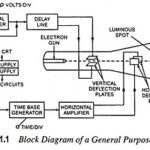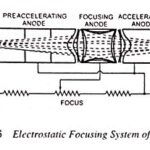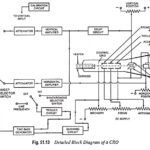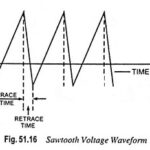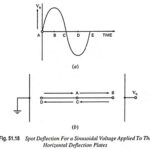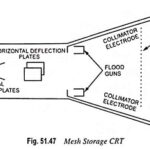Cathode Ray Oscilloscope Articles:
Block Diagram of a General Purpose CRO and its workings: The modern time-domain General Purpose CRO, regardless of its sophistication, consists of the following main units. Cathode ray tube (CRT) — display device. Power supplies and internal circuits. Vertical amplifier (include probe or transducer … (Read More)
What is Focusing Device in Cathode Ray Oscilloscope and why it is required? Because of the mutual repulsion between the electrons, the convergent beam coming out from the accelerating anode has a tendency to spread from the axis. To avoid this … (Read More)
Basic Controls of CRO: Number of controls are required to be provided on a panel of CRO to facilitate its proper functioning. Intensity control is provided for adjustment of brightness of the spot on the screen. It is accomplished by varying … (Read More)
Display of Electrical signals by Oscilloscope: The are two basic ways of display of Electrical signals by Oscilloscope—the X-Y mode and the triggered-sweep mode. The X-Y mode displays the graph of the variation of two external signals—one versus the other. The … (Read More)
Basic Oscilloscope Patterns: CRO is a very versatile instrument in laboratory for measurement of voltage, current, frequency and phase angle of any electrical quantity. But before we go ahead with discussion on measurement of electrical quantities with CRO, we should understand … (Read More)
Analog Storage Oscilloscope Block Diagram and Its Workings: Storage targets can be distinguished from standard phosphor targets by their ability to retain a waveform pattern for a long time (10 to 150 hours after the pattern is produced on the screen). … (Read More)
